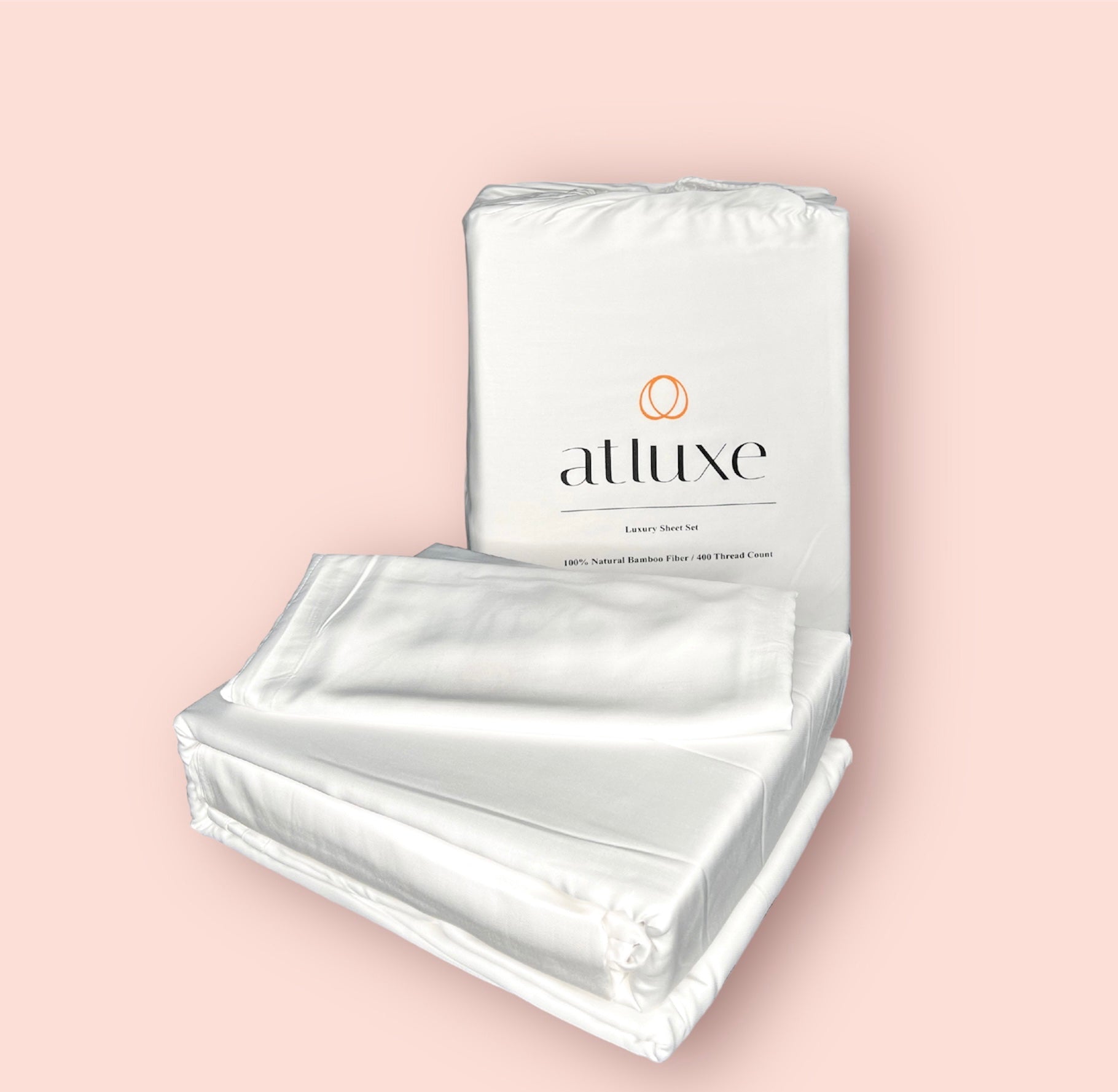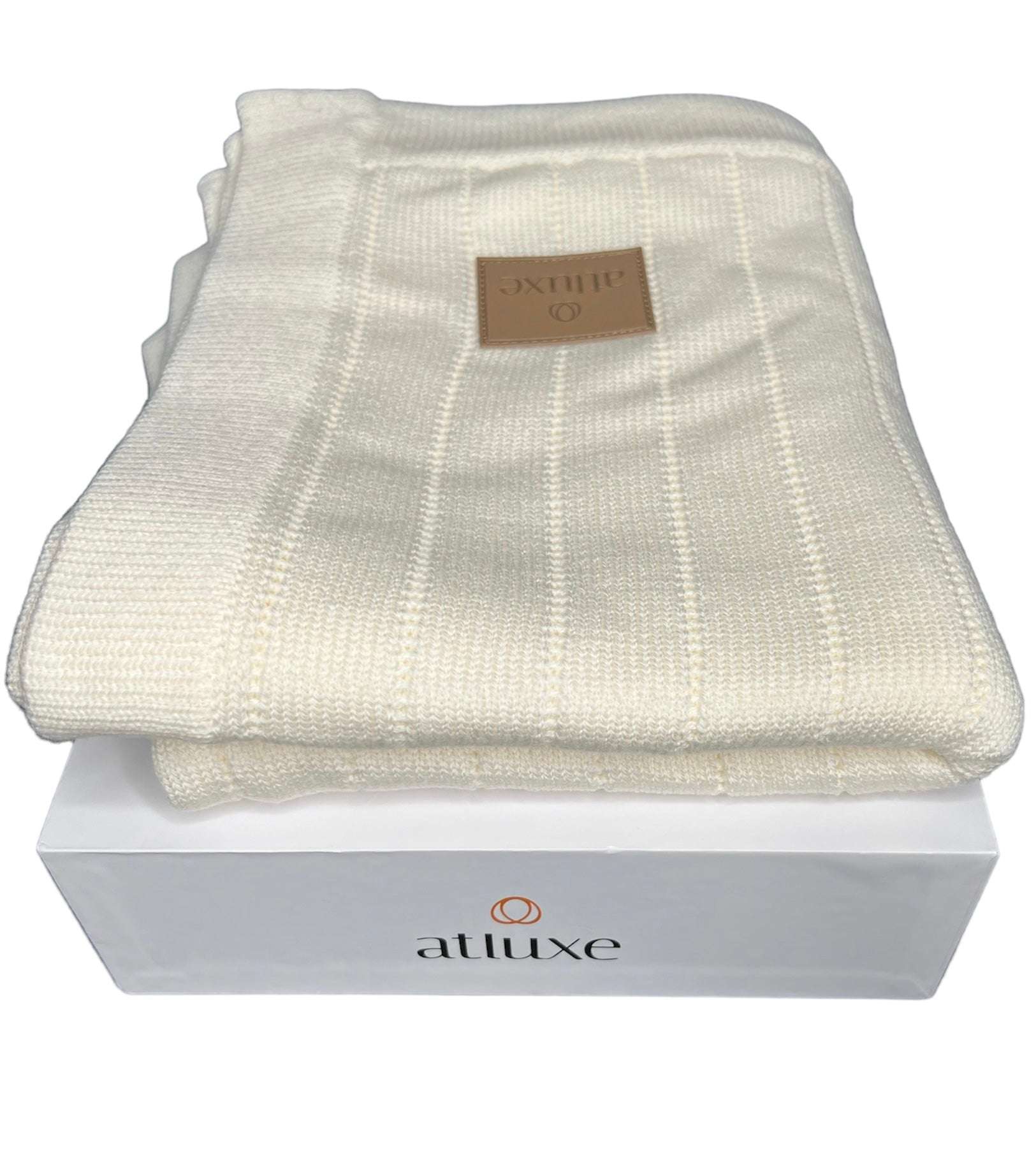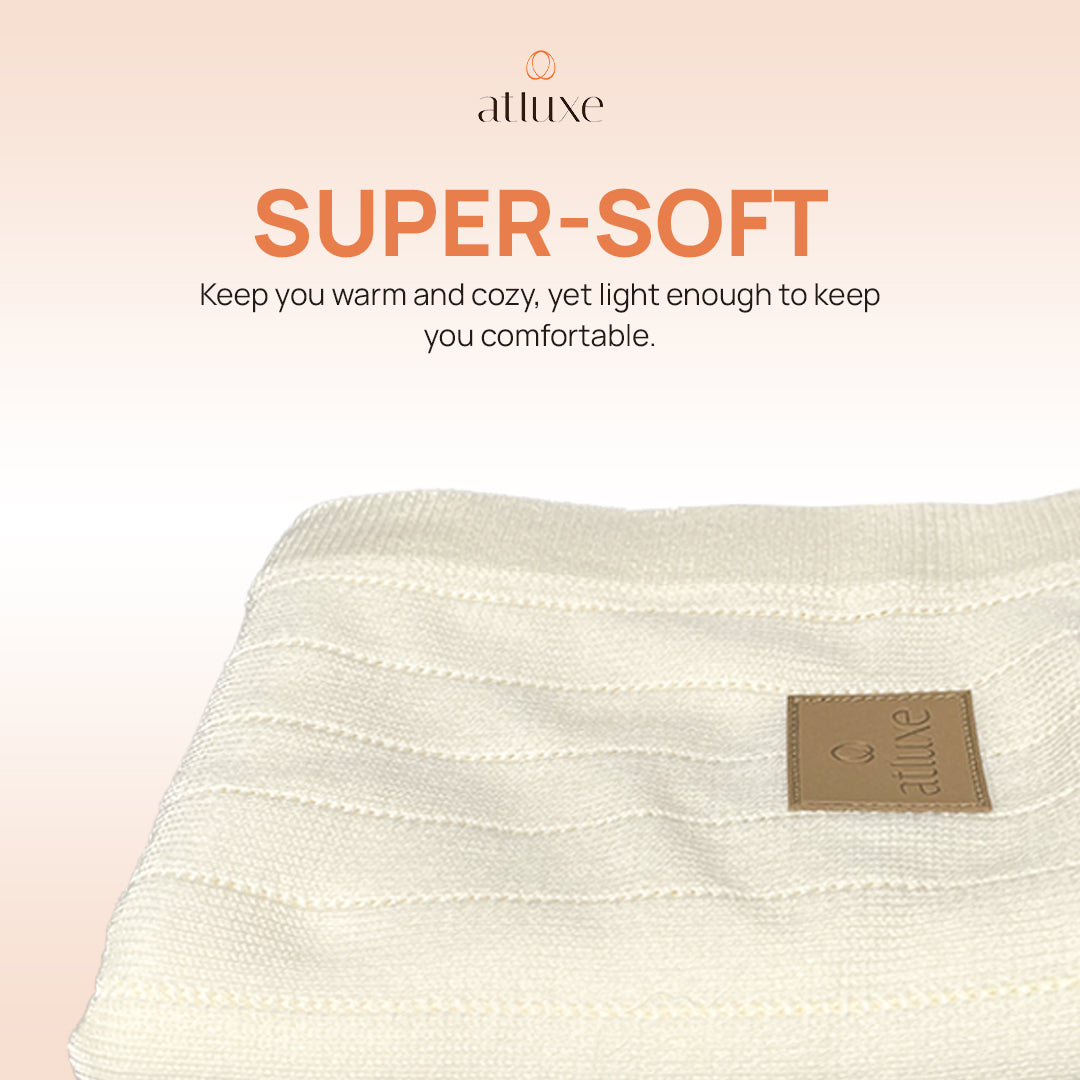Do Swaddles Help Babies Sleep Better? Find Out!
When it comes to helping babies sleep, parents often turn to swaddling as a tried and tested method. But does swaddling really make a difference? Can wrapping your little one snugly in a soft blanket lead to longer and more restful nights for both baby and parent?
In this article, we will explore the topic of swaddling and its impact on a baby's sleep. We will dive into the benefits and safe practices of swaddling, exploring whether it can truly help babies sleep better. So, if you've ever wondered if swaddling is the secret to a peaceful night's sleep, keep reading!
Key Takeaways:
- Swaddling provides a sense of security and warmth, mimicking the feeling of being in the womb.
- It can reduce a baby's startle reflex, leading to longer and deeper sleep.
- Safe sleep practices must be followed to reduce the risk of SIDS and hip dysplasia.
- Swaddling should be stopped once a baby shows signs of being able to roll over on their own.
- Alternatives to swaddling, such as sleep sacks, can provide a similar sense of security.
The Benefits of Swaddling
Swaddling has been a popular practice for centuries when it comes to helping babies sleep better. When you swaddle your baby, you securely wrap them in a blanket, creating a cozy and secure environment that mimics the feeling of being in the womb. This can help soothe your baby and reduce their startle reflex, which often disrupts their sleep. The benefits of swaddling are numerous and can contribute to longer and deeper sleep for babies.
By swaddling your baby, you provide them with a sense of security and warmth. This gentle pressure around their body can help calm their nervous system, making them feel safe and relaxed. Swaddling can also prevent your baby from accidentally scratching their face, which can sometimes disturb their sleep. Additionally, swaddling can help regulate your baby's body temperature, ensuring they feel comfortable throughout the night.
Studies have shown that swaddling can promote better sleep for babies by creating an optimal sleep environment. The snugness of the swaddle can mimic the feeling of being held, providing a soothing and calming effect. This can help your baby feel more settled and less likely to wake up during the night. Swaddling can also assist in lengthening the duration of your baby's sleep cycles, leading to more restful sleep for both baby and parents.
Reducing the Startle Reflex
One of the key benefits of swaddling is its ability to reduce the startle reflex in babies. The startle reflex, also known as the Moro reflex, is an involuntary reaction that causes babies to jerk their limbs suddenly. This reflex can often startle babies awake, making it difficult for them to stay asleep for extended periods. By swaddling your baby, you can gently restrict their movements and minimize the startle reflex, allowing them to sleep more peacefully.
"Swaddling provides a sense of security that can help babies sleep better, reducing their startle reflex and promoting longer, deeper sleep."
The Importance of a Cozy Sleep Environment
A cozy and snug sleep environment is crucial for babies to sleep well. Swaddling can help create this ideal sleep environment by keeping your baby feeling safe and secure. The gentle pressure of the swaddle around their body can provide a comforting sensation, much like being held or hugged. This soft embrace can help your baby feel relaxed and settled, promoting better quality sleep.
When creating a cozy sleep environment, it's essential to consider factors such as temperature, noise, and light. Ensure the room is quiet and dimly lit to promote a calming atmosphere. Use a swaddle made from breathable materials to prevent overheating. All these elements, combined with swaddling, contribute to creating a comfortable and optimal sleep environment for your baby.
| Benefits of Swaddling | Why It Helps Babies Sleep Better |
|---|---|
| Promotes a sense of security | The snugness of the swaddle mimics the feeling of being in the womb, creating a safe and familiar environment. |
| Reduces the startle reflex | Restricting your baby's movements minimizes the startle reflex, allowing for uninterrupted sleep. |
| Creates a cozy sleep environment | The gentle pressure of the swaddle and a calm sleep environment create a comforting space for your baby to sleep soundly. |
| Regulates body temperature | A well-fitted swaddle made from breathable material helps your baby maintain a comfortable body temperature throughout the night. |
Safe Sleep Practices and Swaddling
While swaddling can have many benefits, it is crucial to prioritize safe sleep practices to reduce the risk of sudden infant death syndrome (SIDS). As a parent, I understand the importance of providing a secure and comfortable sleep environment for our little ones.
First and foremost, it is recommended to always put your baby to sleep on their back. This position helps reduce the risk of suffocation and ensures proper airflow. Keeping the sleeping area free from loose bedding and objects is important as well to create a safe sleep space for your baby.
Another key aspect of safe swaddling is to ensure that the swaddle is not too tight. A snug swaddle can provide the soothing effect your baby needs while preventing excessive movement that may trigger the startle reflex. However, it is essential to allow for movement of the baby's legs to prevent the development of hip dysplasia.
Finally, it's important to know when to stop swaddling. Once your baby exhibits signs of being able to roll over on their own, usually around 3-4 months of age, it is crucial to discontinue swaddling. Continuing to swaddle at this stage can pose safety risks and hinder your baby's natural movements.
Remember, while swaddling can be beneficial for your baby's sleep, following safe sleep practices is paramount to ensure their well-being. Always consult with your healthcare provider for personalized advice and guidance based on your baby's unique needs.
By combining the benefits of swaddling with safe sleep practices, you can provide a secure and nurturing sleep environment for your little one. Next, I will delve into the proper techniques for swaddling your baby safely, so you can feel confident and informed in promoting restful sleep for your baby.
How to Swaddle Your Baby Safely
When it comes to swaddling your baby, it's important to prioritize safe sleep practices. Following proper techniques ensures that your little one stays comfortable and secure during sleep. Here's a step-by-step guide on how to swaddle your baby safely:
| Steps for Safe Swaddling |
|---|
|
Remember, always place your baby on their back to sleep, as this position is recommended for safe sleep. By swaddling your baby in a comfortable and secure manner, you can create a soothing environment that promotes longer and deeper sleep.
An image depicting a baby swaddled in a blanket, illustrating safe sleep practices.
When to Stop Swaddling
As your baby grows and develops, they will eventually outgrow the need for swaddling. It is important to know when to stop swaddling to ensure their safety and promote their development.
"Babies typically show signs of being able to roll over on their own at around 3-4 months of age. Once your baby reaches this milestone, it is recommended to stop swaddling to prevent any safety risks," says Dr. Emma Wilson, a pediatrician.
When babies start rolling over, swaddling can restrict their movement, increasing the risk of Sudden Infant Death Syndrome (SIDS). Rolling over is a significant achievement that demonstrates their development and newfound mobility. By allowing your baby to explore their environment freely, they can further their physical and cognitive growth.
Consulting with your healthcare professional is crucial in determining the right time to stop swaddling for your baby. They will consider your baby's individual development, motor skills, and sleeping habits to provide personalized guidance.
| Signs it may be time to stop swaddling: |
|---|
| Your baby consistently rolls from back to belly or vice versa during supervised playtime. |
| Your baby shows strong neck control and can lift their head independently. |
| Your baby seems restless or frustrated when swaddled and tries to break free. |
| Your baby is close to reaching the age range of 3-4 months. |
Always prioritize the overall safety and well-being of your baby. By recognizing these signs and consulting with your healthcare professional, you can ensure a smooth transition from swaddling to a more independent sleep routine.
Alternatives to Swaddling
If you're looking for alternatives to swaddling, there are other options available. One popular alternative is using a sleep sack, also known as a wearable blanket. These sleep sacks provide a similar sense of security as swaddling while allowing for more movement. They are particularly suitable for newborns who may outgrow traditional swaddles quickly.
Using a sleep sack can help keep your baby warm and cozy without the need for tight wraps. Sleep sacks typically have a zipper or Velcro closures, making them easy to put on and take off while ensuring a snug fit. They come in various sizes and styles, so you can choose one that suits your baby's needs.
Some babies may simply not enjoy being swaddled, and that's okay too. Every baby is unique, and it's important to find what works best for their sleep routine and preferences. If your baby shows signs of discomfort or resistance to swaddling, consider trying a sleep sack or other alternatives to provide a comfortable sleep environment.
Remember, the goal is to create a safe and soothing sleep routine for your little one, and swaddling is just one method among many. Listen to your baby's cues and consult with your healthcare provider for personalized advice on finding the best sleep solution for your newborn.
Expert Tip:
"Sleep sacks are a great alternative to swaddling, especially as babies grow and become more active. They provide the feeling of security and warmth while still allowing for movement. It's important to choose a sleep sack that fits well and does not pose any safety risks for your baby."
Swaddling and Sleep Training
When it comes to sleep training your baby, swaddling can be a helpful tool. By reducing the startle reflex and creating a calm sleep environment, swaddling can assist in establishing a consistent sleep routine. The sense of security and warmth provided by swaddling mimics the feeling of being in the womb, which can soothe babies and promote better sleep.
However, it's important to remember that each baby is unique, and what works for one may not work for another. While swaddling can be effective for some babies, others may prefer different sleep arrangements. It's crucial to be flexible and adapt your sleep training methods based on your baby's needs and preferences.
If you decide to incorporate swaddling into your sleep training routine, follow these steps:
1. Choose the Right Swaddle: Select a swaddle blanket or sleep sack that is appropriate for your baby's age and development. Make sure it provides a snug but not too tight fit, allowing for natural movement of the legs and hips.
2. Establish a Bedtime Routine: Create a consistent bedtime routine that includes swaddling as a calming step. This routine helps signal to your baby that it's time to sleep and can assist in creating a sense of security and familiarity.
3. Monitor Your Baby's Comfort: Pay attention to your baby's cues and body language during swaddling. If they appear uncomfortable or resistant, it may be a sign that swaddling is not the right approach for them. Be open to adjusting your sleep training methods accordingly.
4. Transition When Ready: As your baby grows and their startle reflex diminishes, you may consider transitioning out of swaddling. Gradually reduce the tightness of the swaddle or opt for other sleep aids, such as sleep sacks or wearable blankets, to provide a sense of security without the need for traditional swaddling.
Incorporating swaddling into your sleep training journey can be beneficial, but always prioritize your baby's safety and comfort. Remember that every baby is different, so be responsive to their individual needs as you navigate your way towards establishing healthy sleep habits.
The Benefits and Risks of Swaddling
Swaddling offers a range of benefits for both babies and parents. When done correctly, it can promote better sleep, soothe newborns, and reduce the startle reflex that can disrupt their rest. By securely wrapping a baby in a blanket, swaddling provides a sense of security and warmth that mimics the feeling of being in the womb. This can create a cozy and snug sleep environment, potentially leading to longer and deeper periods of rest.
However, it is important to be aware of the potential risks associated with swaddling. One such risk is Sudden Infant Death Syndrome (SIDS), a condition where a baby dies in their sleep without any apparent cause. While swaddling itself does not directly cause SIDS, improper wrapping techniques or the use of thick, heavy blankets can increase the risk. It is crucial to follow safe sleep practices to reduce these risks, such as always placing your baby on their back to sleep and using lightweight, breathable blankets.
Another risk to consider is hip dysplasia, a condition where the hip joint is not properly aligned. Swaddling too tightly or restricting the movement of the baby's legs can potentially contribute to hip dysplasia. To mitigate this risk, it is important to choose swaddles or sleep sacks that allow for natural movement of the hips, with the legs being able to bend up and outwards. This will help ensure the proper development of the hips while still providing the benefits of swaddling.
By following safe sleep practices and monitoring your baby's development, you can mitigate the risks associated with swaddling while still enjoying its benefits. Always consult with your healthcare provider for personalized advice and make adjustments based on your baby's needs and comfort level.
Remember, every baby is unique, and what works for one may not work for another. It's important to find the sleep routine and practices that suit your baby's individual needs and preferences. With proper care and attention, swaddling can be a valuable tool in promoting better sleep for your little one.
Swaddling and Hip Health
To ensure the proper development of the hips, it is crucial to practice hip-healthy swaddling techniques. The swaddle should allow for natural movement of the baby's hips, with the legs being able to bend up and outwards. Tight swaddling that restricts hip movement can increase the risk of hip dysplasia. It's important to choose swaddles or sleep sacks that are specifically designed to support the proper positioning of the hips.
Proper hip health is essential for infants, and swaddling plays a significant role in maintaining it. When swaddling your baby, ensure that the fabric is loose enough to allow for unrestricted movement of the hips. The legs should be able to bend up and outwards, resembling the fetal position. This hip-healthy swaddling technique helps to prevent the risk of hip dysplasia, a condition where the hip joint is not properly formed.
Choosing the Right Swaddles for Hip Health
When selecting swaddles or sleep sacks for your baby, opt for those specifically designed to support hip health. Look for products that have a generous pouch or sack for the legs, allowing for a natural M-shape position. This promotes proper hip development and prevents the legs from being straightened and forced together, which can lead to hip dysplasia.
| Swaddle Type | Description |
|---|---|
| First Option | High-quality swaddle wraps made from breathable materials and with adjustable closures are an excellent choice for hip-healthy swaddling. These wraps provide a snug fit without constricting the hips. |
| Second Option | Sleep sacks with a generous sack for the legs are another hip-healthy alternative. These sacks allow for natural leg movement and provide a sense of security. |
By using swaddles or sleep sacks that support hip health, you can rest assured that your baby's hips are properly aligned and have the freedom to develop naturally. Remember, each baby is unique, so it's important to monitor their comfort and adjust the swaddle as needed to ensure their hips are not restricted.
Maintaining a Safe and Comfortable Sleep Environment
Apart from swaddling, there are other factors to consider in creating a safe and comfortable sleep environment for your baby.
First and foremost, ensure that the crib mattress is firm and fits snugly in the crib, without any gaps. This helps prevent your baby from getting trapped or wedged in between the mattress and crib.
It's also important to keep the room at a comfortable temperature. Overheating can be dangerous for your baby and increase the risk of SIDS (sudden infant death syndrome). Use a room thermometer to ensure the temperature is between 68-72°F (20-22°C).
When it comes to bedding, opt for lightweight and breathable materials. Avoid heavy blankets or comforters that can increase the risk of suffocation. Instead, consider using sleep sacks or wearable blankets that provide warmth without the need for loose bedding.
PRO TIP: Safe Sleep Guidelines
Always remember to place your baby on their back to sleep. This is the safest sleep position and helps reduce the risk of SIDS. Avoid placing your baby on their side or stomach to sleep.
By following these tips and practicing safe sleep guidelines, you can create a secure and comfortable sleep environment for your baby, ensuring they have a restful and safe sleep every night.
Conclusion
Swaddling is a highly effective technique that can help babies sleep better, providing numerous benefits for both the baby and the parents. By securely wrapping your baby in a blanket, you create a sense of security and warmth that replicates the feeling of being in the womb. This can soothe and comfort your baby, reducing their startle reflex and promoting longer, deeper sleep.
However, it is crucial to follow safe swaddling practices to ensure your baby's well-being. Always put your baby to sleep on their back to reduce the risk of Sudden Infant Death Syndrome (SIDS). It's important to use a lightweight and breathable blanket, ensuring the swaddle is secure but not too tight, allowing for movement of the baby's legs to prevent hip dysplasia. Additionally, stop swaddling once your baby shows signs of rolling over independently to avoid any safety risks.
Remember that every baby is unique, and what works for one may not work for another. It's essential to consult with your healthcare provider to ensure personalized advice and guidance on swaddling and your baby's sleep routine. By following these recommendations, you can create a safe and comfortable sleep environment for your baby, promoting healthy sleep habits and a peaceful night's rest for both you and your little one.
FAQ
Do swaddles help babies sleep better?
Yes, swaddling can help babies sleep better. Swaddling provides a sense of security and warmth that mimics the feeling of being in the womb, which can help soothe babies and reduce their startle reflex, leading to longer and deeper sleep.
What are the benefits of swaddling?
Swaddling has several benefits. It creates a cozy and snug sleep environment, promotes better sleep by reducing the startle reflex, and helps babies feel secure. It can also lead to longer and deeper sleep for babies, resulting in happier and more well-rested babies and parents.
How can swaddling be done safely?
To swaddle your baby safely, start by placing a lightweight, breathable blanket on a flat surface in a diamond shape. Fold the top corner down and place your baby with their neck aligned with the fold. Wrap one side snugly around your baby's body, tucking it under the opposite arm, and repeat on the other side. Remember to stop swaddling once your baby shows signs of being able to roll over on their own and always place your baby on their back to sleep.
When should I stop swaddling my baby?
It is recommended to stop swaddling once your baby shows signs of being able to roll over on their own, usually around 3-4 months of age. This is to prevent any safety risks and allow your baby to explore their newfound mobility.
Are there alternatives to swaddling?
Yes, there are alternatives to swaddling. One popular option is using sleep sacks, also known as wearable blankets. Sleep sacks provide a sense of security while allowing for more movement. They are particularly suitable for newborns who may outgrow traditional swaddles quickly. Some babies may also simply not enjoy being swaddled, and it's important to find what works best for your baby's sleep routine and preferences.
Can swaddling be used during sleep training?
Yes, swaddling can be a helpful tool during sleep training. By reducing the startle reflex and creating a calm sleep environment, swaddling can assist in establishing a consistent sleep routine. However, it's important to adapt your sleep training methods based on your baby's needs and be flexible in finding what works best for them.
What are the benefits and risks of swaddling?
Swaddling has numerous benefits, including promoting better sleep, soothing babies, and reducing the startle reflex. However, it is important to be aware of the potential risks associated with swaddling, such as the risk of Sudden Infant Death Syndrome (SIDS) and hip dysplasia. By following safe sleep practices and monitoring your baby's development, you can mitigate these risks and enjoy the benefits of swaddling.
How does swaddling affect hip health?
Swaddling can affect hip health if not done properly. It is crucial to practice hip-healthy swaddling techniques that allow for natural movement of the baby's hips. The swaddle should not be too tight, and the legs should be able to bend up and outwards. Choosing swaddles or sleep sacks specifically designed to support the proper positioning of the hips can help ensure the development of healthy hips.
What other factors should I consider for a safe sleep environment?
Apart from swaddling, there are other factors to consider for a safe sleep environment. These include placing your baby on their back to sleep, ensuring a firm and snugly fitting crib mattress without any gaps, maintaining a comfortable room temperature, and using lightweight and breathable bedding to prevent overheating.
What's the conclusion about swaddling?
Swaddling can be a beneficial technique to help babies sleep better, but it is essential to follow safe practices and monitor your baby's development. Creating a secure and cozy sleep environment through swaddling can promote longer and deeper sleep for your little one. Always consult with your healthcare provider for personalized advice and make adjustments based on your baby's needs.








Leave a comment